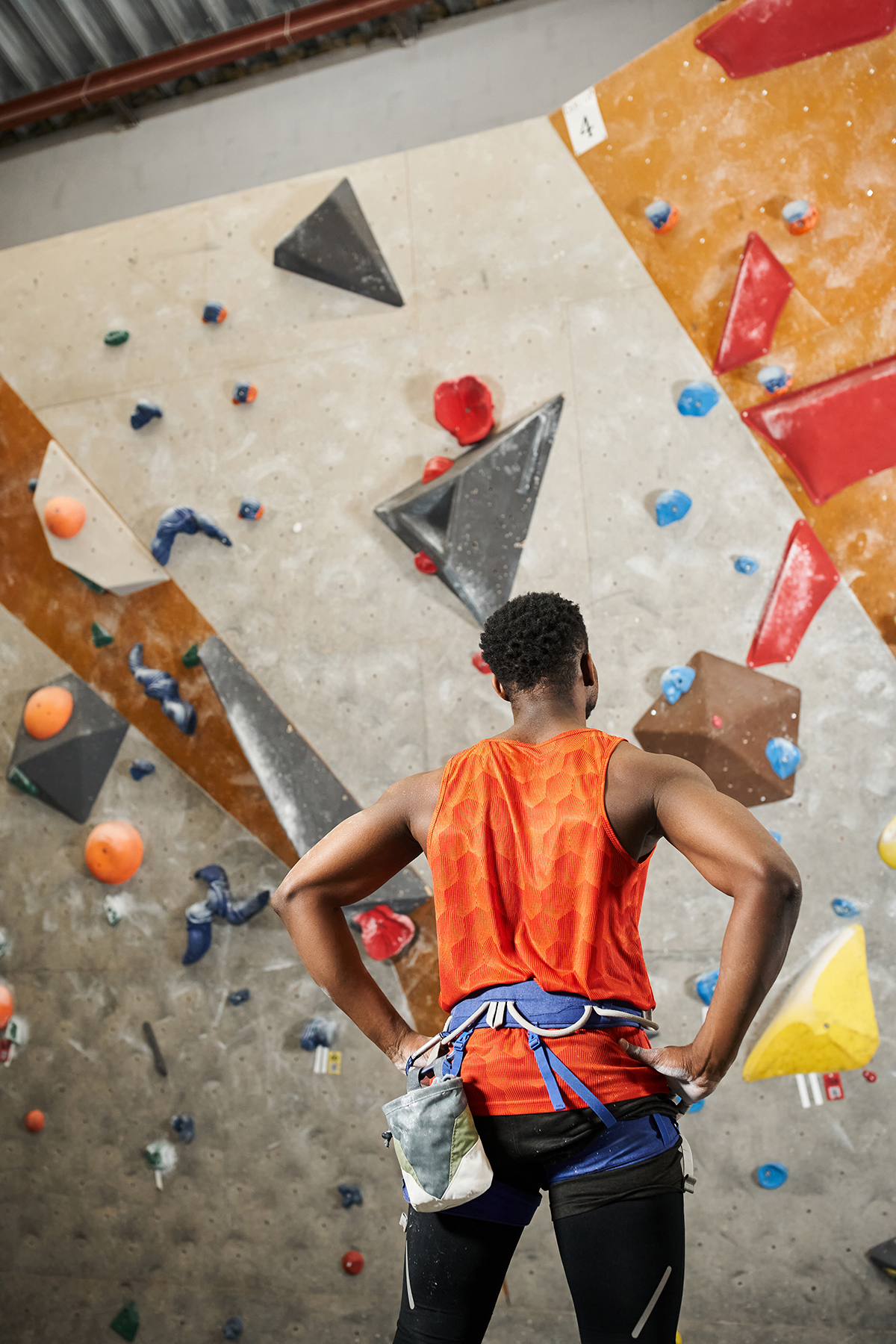Route reading isn’t some mystical skill reserved for elite climbers. It’s a practical, learnable way to anticipate what’s coming next on the wall. Think of it as deciphering the entire climb before making your first move.
You’re scanning the wall, examining all the hold types, angles, and distances, and picturing your movement through the climb. Done right, route reading can save energy, boost efficiency, and help prevent falls. It might seem crazy, but climbing isn’t just about strength; it’s about creativity and foresight, too.
Why Route Reading Starts with the Holds
Every hold on a wall is a clue, a breadcrumb, leading you through the climb. While not an exact science for predicting how every route you climb will be, holds can indicate the type of move that will come next. For example, a jug might suggest a dynamic move. A crimp might mean slow, controlled precision. And slopers often force you to engage more of your body tension, changing the rhythm entirely. Holds dictate not just what to grab but how you move between them. Understanding them helps you tap into the route setter’s intended beta.


One of the biggest mistakes beginners make is grabbing a hold the wrong way and just powering through it, only to pump out halfway up. Another common mistake is tunnel vision on the wall. This includes focusing only on hands and ignoring footholds. Additionally, there’s the risk of misreading the orientation of a hold and climbing straight into a dead end.
Ignoring the nuances of each hold can make even the simplest routes feel much harder, making route reading that much more important.
Get to Know the Types of Climbing Holds
Let’s break them down. Jugs are your best friends. They’re big, comfortable, and perfect for resting. Crimps? They’re small and require finger strength and precision. Slopers are roundish and often frustrating, relying on open-hand grip and body positioning. Pockets can be juggy, but they limit how many fingers you can use. Sometimes, just one or two can fit!
A positive hold gives you something to pull on. Essentially, it’s angled toward you and the direction you’re climbing. Negative holds, by contrast, slope away or offer little to no edge or surface area. Being able to distinguish from the ground can completely shift your approach. Positive holds might allow you to climb more dynamically, while negative ones typically require more body tension and balance.
The size of a hold will also tell you how to use it: palming, crimping, or pressing, while the orientation tells you the direction of movement. It’s not just about what the hold is, but how it’s facing. A jug turned upside down is no longer your best friend. While it can still be good, it won’t be nearly as good. You know?
Reading the Route from the Ground

Start reading by looking at the finish of the route or problem. Visualize where you want to end up. (The top, of course). Then, work backward. A top-down scan helps uncover hidden holds or awkward transitions that could trip you up mid-route. Then, go bottom-up to trace your starting strategy and foot options.
Not all holds are equal! Crux sections, often marked by small holds or big reaches, are energy-draining. Look for where you can pause, where you’ll need to commit fully, and when to transition from finesse to force.
Once you’ve studied the route, build a mental map of your intended sequence. While you can have an idea of how to climb something, routes don’t always go as planned. Be ready to adapt. A good climber can pivot on the fly, reworking beta mid-route when a hold feels worse—or better—than expected.
Training Your Route Reading Skills
Every route is a lesson. Reflect on what you predicted versus what actually happened. Did you misread a crux? Did a hold surprise you? Use that feedback to refine your route-reading skills.
Watching your climbing partner, or anybody really, can open your eyes to new movement options. Maybe they see a flag where you didn’t, or grabbed a hold differently than you. Swap beta with others. It’s a collaborative way to sharpen your understanding of how different climbers interpret the same route.
Route reading is a combination of intuition, strategy, and experience. The holds are more than just obstacles on the wall. Learn to read them, and you’ll start to see not just where you’re going, but how to get there.



